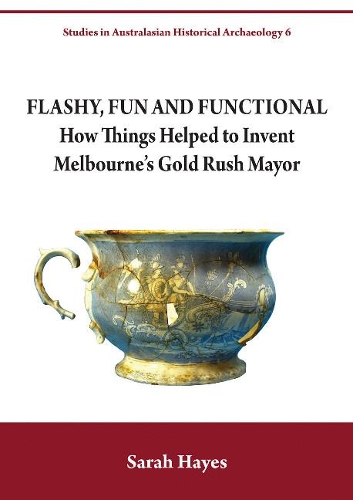
Flashy, Fun and Functional: How Things Helped to Invent Melbournes Gold Rush Mayor
(Paperback)
Publishing Details
Flashy, Fun and Functional: How Things Helped to Invent Melbournes Gold Rush Mayor
By (Author) Dr Sarah Hayes
Sydney University Press
Sydney University Press
21st September 2018
Australia
Classifications
Professional and Scholarly
Non Fiction
Physical Properties
Paperback
84
Width 210mm, Height 297mm, Spine 6mm
250g
Description
Against the backdrop of embryonic Melbourne, John Thomas Smith, publican and builder, left behind his currency roots to become an influential member of society. A widely recognised figure about town smoking a cutty pipe and wearing a white top hat, in 1851 he became Lord Mayor of Melbourne; he went on to be re-elected seven times. His scandalous marriage to the daughter of an Irish Catholic publican, however, and his awkwardly appropriated gentility, made him unpopular with certain sections of society. From 1849 to 1860 Smith and his family occupied 300 Queen Street, Melbourne, one of the first true residential townhouses in the city. Flashy, Fun and Functional: How Things Helped to Invent Melbourne's Gold Rush Mayor explores the things they left behind.
Reviews
'[Hayes] sets out to establish what these different middle-class levels might look like in the archaeological record. She delivers on this aim by providing an interpretation of an aspirational early immigrant assemblage that is 'more grandiose and showy' than assemblages associated with either the established middle-class or the working class ... an important contribution to Australian historical archaeology that improves our understanding of class structure in the 19th century.' -- Pamela Ricardi * Australasian Historical Archaeology *
Author Bio
Sarah Hayes is a historical archaeologist who researches quality of life and social mobility in 19th-century Victoria through the lives, homes and rubbish of everyday people. She works within the Heritage and Indigeneity stream of the Alfred Deakin Institute for Citizenship and Globalisation, Deakin University.
